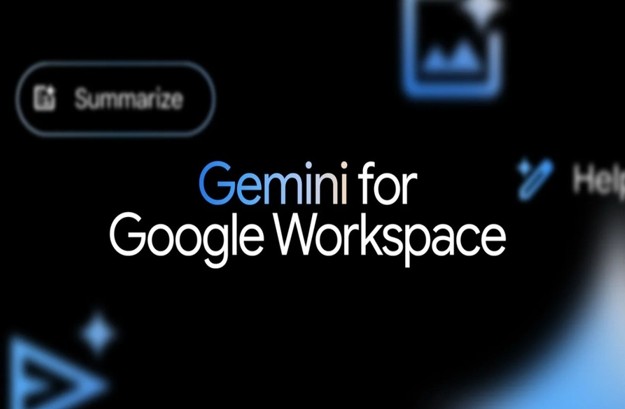Best Selling Products
Should I Use SkyDrive(OneDrive) Or Google Drive? Detailed Comparison From A To Z
Nội dung
- 1. General overview of SkyDrive
- 2. General overview of Google Drive
- 3. Basic comparison table of SkyDrive and Google Drive
- 4. Detailed comparison of SkyDrive and Google Drive
- 4.1. About free storage and paid plans
- 4.2. About the ability to integrate perfectly into the ecosystem
- 4.3. About security
- 4.4. About synchronization
- 4.5. About the ability to collaborate and share
- 4.6. About the experience interface
- 4.7. About compatibility
- 5. Should I choose SkyDrive or Google Drive?
Among many choices, SkyDrive (now OneDrive) and Google Drive are always among the top cloud storage services most preferred by users. However, each platform has its own strengths and limitations, making many people wonder: Should I choose SkyDrive or Google Drive to store data more securely, conveniently and effectively?

In today's digital age, online data storage has become an essential need for both individuals and businesses. Among many options, SkyDrive (now OneDrive) and Google Drive are always in the top of the most popular cloud storage services. However, each platform has its own strengths and limitations, making many people wonder: Should I choose SkyDrive or Google Drive to store data more securely, conveniently and effectively? In this article, we will compare SkyDrive and Google Drive in detail based on many important criteria such as capacity, features, synchronization capabilities, security and convenience... From there, you will have a clearer view to make a decision that suits your needs.
1. General overview of SkyDrive
SkyDrive is a familiar name but is no longer used. In fact, SkyDrive has been renamed OneDrive. Here is some specific information about this cloud storage service.
SkyDrive is the old name of OneDrive software. This is a cloud file storage and synchronization service developed by Microsoft since 2007. Before being renamed, SkyDrive had existed for 7 years on the market. Currently, the SkyDrive platform under the new name is known by many people.
The SkyDrive (OneDrive) platform allows users to store documents, images, videos and many other file formats in an online space. You can then access your data on this platform anytime, anywhere via a browser on any Windows, macOS, iOS, Android device.
SkyDrive is considered an important tool in the Microsoft 365 ecosystem. In particular, it is extremely useful for those who use Office regularly.
.png)
SkyDrive (OneDrive) has a wide range of features that help optimize your file storage and management experience. Here are some of the popular features of this software:
First, automatic file sync
When you save a file to the OneDrive folder on your computer, it's automatically uploaded to the cloud. It also syncs to all the other devices you're signed in to.
Second, deep integration with the Microsoft Office suite
You can create, edit, and save Word, Excel, and PowerPoint documents directly on OneDrive without having to download them to your computer. This feature helps you work with Office formats seamlessly and efficiently.
Cheap Storage Upgrade
Third, Personal Vault security
This feature encrypts and protects data with a layer of authentication. It can be a PIN, fingerprint, or facial recognition. Therefore, you can rest assured that sensitive data such as passports, IDs, and financial information are always kept safe.
Fourth, share files and folders
OneDrive offers flexible sharing features. You can also set passwords, limit downloads, and set expiration dates for files and folders. It also offers the ability to restore previous versions of files.
.png)
To have a comprehensive view and specific assessment of SkyDrive, you can consider its strengths and weaknesses as follows:
Outstanding advantages of the platform
Fast synchronization with block-level sync technology
Advanced security with Personal Vault and AES-256 + SSL/TLS encryption; supports two-factor authentication
Provides a smooth experience on Windows when integrated directly into File Explorer, supports offline when connection is lost
Basic disadvantages of the platform
Free storage is limited to only 5GB, which is quite low compared to Google Drive's 15GB.
Microsoft controls the encryption key so privacy is not absolutePlatform limits external system integration
2. General overview of Google Drive
If Microsoft has OneDrive, Google has Google Drive. One of the cloud storage, data management and sharing platforms that is quite popular with many users today.
Google Drive is known as a cloud storage and synchronization platform developed by Google. This service allows users to store a variety of files such as text, photos, videos, Office documents on Google servers. In particular, Google Drive is deeply integrated with other Google applications in Google Workspace. Therefore, you can completely collaborate between Google Drive and Google applications (Docs, Sheets, Slides, ...) in real time.
Google Drive provides access from any computer, phone, laptop. To use it, you only need a Google account and a stable internet connection.
.png)
Below are the outstanding features of Google Drive, you can refer to when comparing with SkyDrive.
First, free storage up to 15GB
Individual users can store a large amount of data between Drive, Gmail and Photos. This is a significant advantage that Google Drive brings over many other competitors. In addition, businesses and organizations can upgrade storage capacity from 30GB, 2TB, 5TB, .... depending on usage needs.
Second, the ability to collaborate in real time
With Google Docs, Google Sheets, Google Slides, people can edit a document at the same time and see the changes immediately. This feature eliminates the limitations of sending back and forth multiple versions of data files.
Third, support a variety of file formats
Google Drive is not only limited to Google Workspace files but also Microsoft Office files, PDFs, images, etc. In particular, users can preview files in Google Drive without downloading them.
Fourth, the ability to synchronize data across multiple devices
Google Drive supports automatic backup & sync. At the same time, it supports cross-platform file sync and automatically updates changes in data.
Fifth, advanced search support
Google Drive uses artificial intelligence, OCR to recognize image/PDF characters, quickly find file content.
.png)
Like any service, Google Drive has its own strengths and weaknesses, which determine its suitability for each type of user.
Outstanding advantages of Google Drive
Free storage capacity 15GB, paid from 30GB, 2TB, 5TB, ... much larger than OnDrive.
The interface is simple, easy to operate, easy to use and quite friendly to new users.
Reasonable upgrade costs
Disadvantages of Google Drive
Google Drive requires network to access and sync, offline only supports Docs/Sheets/Slides which is enabled by default
Maximum upload limit 750 GB per day, single file no more than 5 TB
Privacy concerns, Google may scan data content for advertising purposes.
3. Basic comparison table of SkyDrive and Google Drive
Below is a basic comparison table between SkyDrive and Google Drive, giving you an overview of the two platforms as follows:
Characteristic
SkyDrive (OneDrive)
Google Drive
Developer
Microsoft
Free capacity
5 GB
15 GB
Popular paid plans
1 TB (via Microsoft 365),
30 GB, 2 TB, 5TB
Ecosystem integration
Office, Windows, Teams, Outlook…
Gmail, Google Docs, Sheets, Slides, Meet,…
Data synchronization
Block-level sync
Full-file sync
Real-time collaboration
Yes (on Office Online)
Have
Outstanding security features
With Personal Vault, 2-step authentication
2-step authentication, AES-256 encryption, Vault available with Google Workspace Business Plus or higher
Device Compatibility
Windows, macOS, Android, iOS
Windows, macOS, Android, iOS
Who is it for?
Office users, businesses using Microsoft 365
Individuals and businesses use Google Workspace and Gmail a lot.
From the table above, it can be seen that SkyDrive and Google Drive both have their own strengths to suit the needs of each user. And to better understand and choose the right solution, you can refer to the detailed comparison of the two platforms SkyDrive and Google Drive in the content below.
4. Detailed comparison of SkyDrive and Google Drive
SkyDrive and Google Drive both have their own strengths and are suitable for different user needs. However, to choose the most optimal solution, you can refer to the detailed comparison table of these two platforms in the content below.
.png)
4.1. About free storage and paid plans
Free storage is the thing that users care about the most when using any cloud storage service. Between Google SkyDrive and Google Drive, we will see the huge difference between the two platforms on this issue as follows:
Google Drive provides users with 15GB of free storage as soon as they successfully register for a Google account. This capacity is shared with other core Google services such as Gmail and Google Photos. Therefore, all emails, Gmail attachments, images, and videos backed up on Google Photos will share 15GB. This storage capacity is usually suitable for personal use.
SkyDrive only offers 5GB of free storage when you successfully create a Microsoft account. Users will be able to store text documents, some photos and small files. Therefore, if you need to store videos, high-resolution photos or large projects, you will need to upgrade to a paid plan sooner.
.png)
When it comes to paid packages of SkyDrive and Google Drive, you can see that:
Google Drive offers a variety of expansion packages from 30GB, 2TB, 5TB, 10TB, ... at competitive prices. The expansion packages in the Google Workspace service will bring users countless additional benefits. Users can share files internally or externally with control. Or share by default only within the organization, helping to keep data more secure. Normally, paid packages will be suitable for many subjects such as businesses, organizations, ...
OneDrive (formerly SkyDrive) is often tightly integrated into Microsoft 365 plans. However, the lowest Microsoft 365 service plan only gives users 1TB of OneDrive storage. At the same time, users will be given full access to Microsoft's premium office suite of applications such as Word, Excel, PowerPoint, Outlook, OneNote, and Publisher.
In short, if you prioritize large amounts of free storage, Google Drive is the way to go. But if you want a deeply integrated, synced storage solution, OneDrive's plans with Microsoft 365 offer outstanding value.
4.2. About the ability to integrate perfectly into the ecosystem
When comparing SkyDrive and Google Drive in terms of seamless integration with the provider's overall ecosystem, you'll see:
SkyDrive is designed in the Microsoft ecosystem and is deeply integrated into the Windows operating system, like a part of File Explorer. You can drag and drop files directly into the SkyDrive folder as a local drive. In particular, for Windows users, OneDrive's perfect integration with the Microsoft Office suite (Word, Excel, PowerPoint, OneNote, Outlook) brings significant benefits. For businesses, SkyDrive integrates with SharePoint and Microsoft Teams, creating a unified collaborative working environment.
Google Drive shares storage with Gmail (your email) and Google Photos (your photos and videos). Therefore, you can store attachments in Gmail, upload photos/videos to Google Photos with just a few basic operations. More specifically, Google Drive in the Google Workspace platform also brings smooth integration with the Google ecosystem (Docs, Sheets, Slides, Forms, ...). It allows you to create, edit and collaborate in real time with documents, spreadsheets and presentations directly from Drive without installing any other software.
In short, if you want deep integration with Windows Office, SkyDrive will help you get the most benefit. But if you want to use Google services, Google Drive is an irreplaceable choice.
4.3. About security
When comparing SkyDrive and Google Drive in terms of security, you will see that these two platforms have many similarities and some differences as follows:
.png)
Similarities
Both Google Drive and SkyDrive are built with the highest security standards. Your data is encrypted both in transit and at rest. Both services support two-factor authentication (2FA), an additional layer of security.
Difference
Besides the similarities, each service has different highlights in its security features as follows:
OneDrive has a Personal Vault security feature. This is a specially secured area in OneDrive. Sensitive files such as passports, financial documents, and personal information are stored here and must be authenticated with a layer of security. It can be a PIN, fingerprint, facial recognition, or a code sent to your email or phone number before being opened. In addition, OneDrive also provides ransomware detection and recovery, helping you restore files to the state before they were encrypted by malware.
Google Drive integrates tightly with Google's anti-spam, anti-phishing, and anti-malware systems. Google Drive also allows users to control and manage access to their data. Additionally, Google Drive features alerts for suspicious activity and the ability to review file activity history. For business users, Google Workspace also offers advanced governance and compliance features.
In short, both services offer solid security. However, if you need to protect extremely sensitive documents and want an extra layer of physical/authentication protection, OneDrive's Personal Vault is a safe bet. If you want overall security, Google Drive is the way to go.
4.4. About synchronization
Both SkyDrive and Google Drive do a great job in terms of data synchronization:
SkyDrive provides a sync experience on Windows. That is, when you install the OneDrive app on your Windows computer, it creates a special folder in File Explorer that acts just like a local drive. Any files saved to the folder are automatically uploaded to the cloud. At the same time, it also syncs instantly to other devices when you sign in to your OneDrive account.
Google Drive also offers desktop syncing on Google Drive (Drive for Desktop). This app lets you access Drive files and folders directly from File Explorer (on Windows) or Finder (on macOS), just like OneDrive. Syncing and updating changes in Google Drive usually happens instantly across all devices.
4.5. About the ability to collaborate and share
.png)
When comparing SkyDrive and Google Drive in terms of collaboration and sharing capabilities, Google Drive is rated higher. Because:
Google Drive helps people work in groups with Google Docs, Sheets, and Slides applications. In particular, Google Drive provides real-time collaboration capabilities. That is, many people can open and edit a document at the same time, and see changes in data immediately. Therefore, users will not have to waste time sending document file versions back and forth to others, saving time and avoiding unnecessary errors. In particular, Google Drive also provides a version history system. It will allow you to review every smallest change that has been made, who made the change, and easily return to any previous version. When sharing, Google Drive provides flexible links or private sharing via email. Moreover, file owners have the right to assign different access rights to each data user.
SkyDrive integrates with Microsoft Office applications online. Users can share Word, Excel, PowerPoint documents with others and edit them together. In addition, you can track changes, comments, and version history to manage revisions in SkyDrive files similar to Google Drive. However, the real-time collaboration experience on SkyDrive is not as smooth and intuitive as Google Drive.
4.6. About the experience interface
Comparing SkyDrive and Google Drive in this aspect, you will see two completely different styles.
SkyDrive has a typical Microsoft design interface. The interface has a layout familiar to Windows users, with easy-to-understand icon navigation bars. For the desktop application, OneDrive integrates deeply into Windows File Explorer. Therefore, users will feel the operation is similar to managing files on a local hard drive.
Google Drive has Google's minimalist style. The Google Drive web interface has a core Google-like search bar right at the top. Files and folders can be viewed as lists or grids, making them easy to organize and search. Google Drive also has the ability to preview many different file types directly in the browser without downloading or installing additional software.
In short, the interfaces of SkyDrive and Google Drive both feel more familiar and accessible to users. However, Google Drive still offers a more minimalist and efficient search experience for users.
4.7. About compatibility
As for SkyDrive and Google Drive format and platform compatibility, we see:
SkyDrive is compatible with Microsoft Office file formats (.docx for Word, .xlsx for Excel, .pptx for PowerPoint). Therefore, you can open, edit, and save these files directly on OneDrive without any problems with formatting, fonts, or structure. In addition, SkyDrive also supports viewing and storing many file formats such as PDF, image types (JPG, PNG, GIF), videos, and many more. SkyDrive also offers cross-platform collaboration, from Windows to macOS. And on iOS (iPhone/iPad) and Android mobile apps, you can access, edit, and share files anytime, anywhere from your phone and tablet.
Google Drive is flexible in its compatibility with formats and platforms. Because Google allows you to open and edit Microsoft Office files (.doc, .xls, .ppt) directly without having to convert them to another format. You will be allowed to work with Office files right in Google Drive and easily save them in their original format. Especially in terms of platform compatibility, Google Drive is optimized between both desktop and phone. In particular, Google Drive also has a close relationship with Chrome OS and is the core service of Chormebook devices.
.png)
5. Should I choose SkyDrive or Google Drive?
In terms of comparing SkyDrive and Google Drive, have you answered the question “Should I choose SkyDrive or Google Drive”? In fact, there is no right answer, because the choice will depend on the needs and purposes of the user:
Choose SkyDrive when:
If you regularly use Windows as your main operating system and the Microsoft Office suite (Word, Excel, PowerPoint, Outlook) as your daily work tools.
If you prioritize security for sensitive files, SkyDrive's Personal Vault feature is a peace of mind.
If you want deep integration into Windows and work with files as if on a local hard drive.
Also choose Google Drive when:
If you want a lot of free storage or more options for upgrading storage.
If you need effective real-time team collaboration tools with a variety of application platforms in the Google ecosystem.
If you want the flexibility to store file formats, including the ability to directly edit Microsoft Office files.
In short, you can actually choose to use a combination of both services in your work and usage needs.
Hopefully the analysis in the article has helped you have more information to make the right decision. No matter which service you choose, using cloud storage properly will help you protect your data effectively, access it easily anytime, anywhere, and optimize your daily work.












































